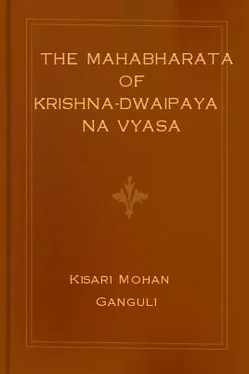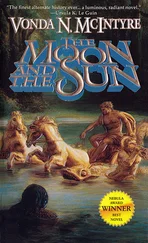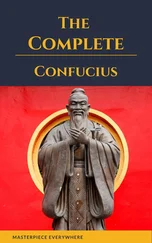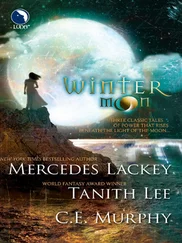Kisari Mohan Ganguli - The Mahabharata of Krishna-Dwaipayana Vyasa
Здесь есть возможность читать онлайн «Kisari Mohan Ganguli - The Mahabharata of Krishna-Dwaipayana Vyasa» весь текст электронной книги совершенно бесплатно (целиком полную версию без сокращений). В некоторых случаях можно слушать аудио, скачать через торрент в формате fb2 и присутствует краткое содержание. Издательство: ManyBooks.net, Жанр: на английском языке. Описание произведения, (предисловие) а так же отзывы посетителей доступны на портале библиотеки ЛибКат.
- Название:The Mahabharata of Krishna-Dwaipayana Vyasa
- Автор:
- Издательство:ManyBooks.net
- Жанр:
- Год:неизвестен
- ISBN:нет данных
- Рейтинг книги:3 / 5. Голосов: 1
-
Избранное:Добавить в избранное
- Отзывы:
-
Ваша оценка:
- 60
- 1
- 2
- 3
- 4
- 5
The Mahabharata of Krishna-Dwaipayana Vyasa: краткое содержание, описание и аннотация
Предлагаем к чтению аннотацию, описание, краткое содержание или предисловие (зависит от того, что написал сам автор книги «The Mahabharata of Krishna-Dwaipayana Vyasa»). Если вы не нашли необходимую информацию о книге — напишите в комментариях, мы постараемся отыскать её.
The Mahabharata of Krishna-Dwaipayana Vyasa — читать онлайн бесплатно полную книгу (весь текст) целиком
Ниже представлен текст книги, разбитый по страницам. Система сохранения места последней прочитанной страницы, позволяет с удобством читать онлайн бесплатно книгу «The Mahabharata of Krishna-Dwaipayana Vyasa», без необходимости каждый раз заново искать на чём Вы остановились. Поставьте закладку, и сможете в любой момент перейти на страницу, на которой закончили чтение.
Интервал:
Закладка:
One should listen with rapt attention to this Asramavasika Parvan, and having heard it recited, one should feed Brahmanas with Habishya, honouring them with scents and garlands."'
The end of Asramavasika Parvan.
FOOTNOTES
1. The derivation of Aralikas is explained by Nilakantha thus; Potherbs cut off with a kind of weapon called Ara are called Aralu. They who were expert in cooking those potherbs were called Aralikas. Ragakhandava was manufactured from piper longum, dry ginger, sugar, and the juice of Phaseolus Mango.
2. It will be remembered, Earth, unable to bear her load of population, prayed to the Grandsire for lightening that load. The Grandsire urged Vishnu to do the needful. Hence Vishnu incarnated himself as Krishna and brought about a lightening of Earth's load.
3. Mahadana implies such gifts as elephants, boats, cars, horses, etc. Everybody does not accept these gifts, for their acceptance causes a Brahmana to fall away from his status.
4. Some of the Bengal texts read avimukham hatah for abhimukam hatah. The sense is the same.
5. The king gets a sixth share of the penances performed by the Rishis living under his protection. The demerit, again, of all evil deeds done within his realm is shared by the king, for such deeds become possible through absence of supervision by the king.
6. Formerly kings and noblemen wore jewels and medicinal herbs on their arms. The last were enclosed in drum-like capsules of gold, hermetically closed on both sides. It was believed that jewels and medicinal herbs are a great protection against many evils.
7. The eight limbs of a kingdom are the law, the judge, the assessors, the scribe, the astrologer, gold, fire, and water.
8. Atta is explained by Nilakantha as the space kept for the soldiers to tread upon.
9. Grass may conceal the spies of foes. The darkness of night also may do the same.
10. Adanaruchi is a very civil way of indicating corrupt officials and thieves. Inflictors of severe punishments were looked upon as tyrants deserving of being put down. Heavy fines were at one time interdicted in England. Sahasapriya is a doer of rash deeds, such as culpable homicide not amounting to murder, to adopt the terminology of the Indian Penal Code.
11. i.e., content to work on receiving their food only. Their wages should not be higher that' what is needed to feed them.
12. The word Mandala has been explained below in verse 5. The distinction between Udasinas and Madhyasthas, as explained by Nilakantha, is that the former are neutrals, while the latter are those who cherish equal sentiments towards both the parties.
13. The four kinds of foes, as explained by the commentator, are (1) foes proper, (2) allies of foes, (3) those that wish victory to both sides, and (4) those that wish defeat to both sides. As regards Atatayins, they are six, viz., (1) he that sets fire to one's house, (2) he that mixes poison with one's food, (3) he that advances, weapon in hand, with hostile intent, (4) he that robs one of one's wealth, (5) he that invades one's fields, and (6) he that steals one's wife.
14. The sixty are thus made up. Eight consisting of agriculture and the rest; twenty-eight consisting of forces and the rest; fourteen consisting of atheists and the rest and eighteen consisting of counsels and the rest.
15. i.e., land that is fertile, gold that is pure, and men that are strong.
16. The wards Kasyanchidapadi should be construed with what follows.
17. The cane yields when pressure is directed towards it. In the Santi Parva occurs the detailed conversation between the Ocean and the Rivers. The former enquired why, when the Rivers washed down the largest trees, they could not wash into the Ocean a single cane. The answer was that the cane was yielding; the trees were not so.
18. War and peace are each of two kinds, i.e., war with a strong foe and that with a weak foe: peace with a strong foe and that with a weak foe. The Bengal texts wrongly read dividhopayam or vividhopayam.
19. I expand this verse a little, following the commentator.
20. Strength is of three kinds, as explained in the next verse.
21. Utsaha is readiness or alacrity, of the forces to attack the foe: prabhusakti is the complete mastery of the king over his forces, i.e., through discipline. By strength of counsels, in this connection, is meant well-formed plans of attack and defence.
22. Maulam is explained as the strength of money. In modern warfare also, money is called 'the sinews of war'. Atavivala or the force consisting of foresters, was, perhaps, the body of Irregulars that supported a regular army of combatants. Bhritavala implies the regular army, drawing pay from the state at all times. In India, standing armies have existed from remote times. Sreni-vala is, perhaps, the forces of artisans, mechanics, and engineers, who looked after the roads and the transport, as also of traders who supplied the army with provision.
23. A sakata array was an array after the form of a car. It is described in Sukraniti fully, and occurs in the Drona Parva, ante. The Padma is a circular array with angular projections. It is the same with what is now called the starry with angular projections. It is the same what is now called the starry array, many modern forts being constructed on this plan. The Vajra is a wedge-like array. It penetrates into the enemy's divisions like a wedge and goes out, routing the foe. It is otherwise called suchivyuha.
24. i.e., meet the foe whether within his own kingdom or invade the foe's realm and thus oblige the foe to fall back for resisting him there.
25. i.e., for obtaining fame here and felicity hereafter.
26. Those who die become at first what is called Preta. They remain so for one year, till the Sapindikarana Sraddha is performed. They then become united with the Pitris. The gifts made in the first Sraddha as also in the monthly ones, have the virtue of rescuing the Preta or bringing him an accession of merit. The gifts in annual Sraddhas also have the same efficacy.
27. The text in verse 2, where mention is made of thousands of years as embracing the rule of Yudhishthira, is evidently vitiated.
28. The correct reading is jane and not kshane.
29. 'It is difficult to imagine why the rider of the Sindhus, Jayadratha, only should be regarded as a wrong-doer to the Pandavas. In the matter of the slaying of Abhimanyu he played a very minor part, by only guarding the entrance of the array against the Pandava warriors. It is true he had attempted to abduct Draupadi from the forest retreat of the Pandavas, but even in this, the wrong was not so great as that which Duryodhana and others inflicted on the Pandavas by dragging Draupadi to the court of the Kurus.
30. The usual way in which gifts are made at the present day on occasions of Sraddhas and marriages or other auspicious rites very nearly resembles what is described here. Instead of dedicating each gift with mantras and water and making it over to the receiver, all the articles in a heap are dedicated with the aid of mantras. The guests are then assembled, and are called up individually. The Adhyaksha or superintendent, according to a list prepared, names the gifts to be made to the guest called up. The tellers actually make them over, the scribes noting them down.
31. Each gift that was indicated by Dhritarashtra was multiplied ten times at the command of Yudhishthira.
32. As Dhritarashtra was blind, his queen Gandhari, whose devotion to her lord was very great, had, from the days of her marriage, kept her eyes bandaged refusing to look on the world which her lord could not see.
33. Nilakantha explains that as Dhritarashtra is Pandu's elder brother, therefore, Kunti regards him as Pandu's father. Queen Gandhari therefore is Kunti's mother-in-law. The eldest brother is looked upon as a father.
Читать дальшеИнтервал:
Закладка:
Похожие книги на «The Mahabharata of Krishna-Dwaipayana Vyasa»
Представляем Вашему вниманию похожие книги на «The Mahabharata of Krishna-Dwaipayana Vyasa» списком для выбора. Мы отобрали схожую по названию и смыслу литературу в надежде предоставить читателям больше вариантов отыскать новые, интересные, ещё непрочитанные произведения.
Обсуждение, отзывы о книге «The Mahabharata of Krishna-Dwaipayana Vyasa» и просто собственные мнения читателей. Оставьте ваши комментарии, напишите, что Вы думаете о произведении, его смысле или главных героях. Укажите что конкретно понравилось, а что нет, и почему Вы так считаете.












